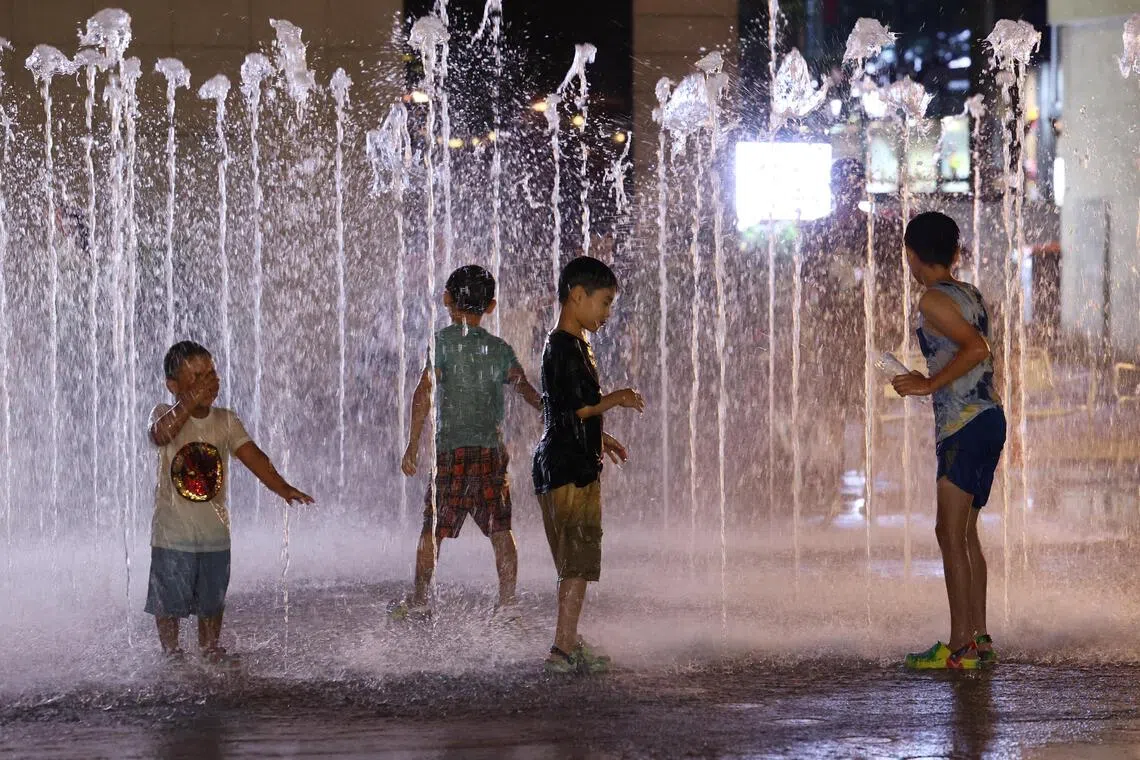Seoul to strengthen laws, sentencing for kidnapping attempts
Sign up now: Get insights on Asia's fast-moving developments

Under the new policy proposed by the government, all reports made to law enforcement involving children will be treated as top-priority cases.
PHOTO: EPA-EFE
Follow topic:
SEOUL - The South Korean government announced a set of measures on Nov 11 to strengthen its response to kidnapping and child luring crimes
The plan – jointly released by the Ministry of Interior and Safety, the Korean National Police Agency, the Ministry of Education and the Ministry of Health and Welfare – was announced following a string of recent kidnapping attempts targeting elementary school students.
In late August, three men in their 20s were arrested for attempting to kidnap children near an elementary school in Seodaemun-gu, western Seoul.
A chain of similar incidents were reported after, igniting concerns among the public.
The government pointed to weak punishment, difficulty proving criminal intent and lack of public awareness behind the severity of such crimes as key reasons why such crimes continue to occur.
“In many cases, kidnapping cases were found to be easily dismissed as a mere ‘form of play’, making it difficult for police to prove criminal intent,” said Interior Minister Yun Ho-jung during the Nov 11 press briefing.
When there is no sexual motive behind the cases, perpetrators are often found facing lighter charges in South Korea.
Under the new policy proposed by the government, all reports made to law enforcement involving children will be treated as top-priority cases to ensure immediate police dispatch, investigation and protection for the affected child.
Cases deemed to be serious, such as those that pose direct harm to the children’s lives, will be overseen directly by local police station chiefs within close proximity of where the call is made.
For kidnapping cases involving strangers who have had no prior contact with the child or the child’s family in the past, police will be permitted to immediately seek pretrial detention warrants.
If needed, emotional abuse charges under the Child Welfare Act may also be applied against the perpetrator. In the most serious cases, the government said it would push for the public disclosure of suspects’ identities.
“The government also plans to tighten sentencing guidelines and raise statutory penalties to better deter such crimes and emphasise that they will not be taken lightly,” Mr Yun added.
Under current law, cases related to child abduction or luring are punishable by up to 10 years in prison, but as there is no minimum term, it often results in lenient sentences.
The government’s response plan also focused on making school zones safer through environmental and community-level interventions such as providing immersive safety education, stationing school patrols and handing out safety alarms to elementary school students.
Police, local governments and education offices will collaborate to inspect crime-prone areas near schools and install more security cameras near schools that lack them. Such security camera footage may be used later by the police when reports are filed to help the authorities identify the perpetrators’ intent.
The number of safety patrol personnel stationed at schools nationwide will also increase.
Currently, 10,811 personnel are deployed across the country, but the government plans to add 410 more to enhance student safety during commuting hours. Police officers will also be dispatched near schools to further strengthen safety measures.
The government also plans to introduce more immersive safety education using role-playing scenarios, alongside public awareness campaigns on kidnapping crimes.
Mr Yun said the new government strategy requires a community approach.
“Eliminating child abduction and luring crimes is a task that must be tackled by the central and local governments – and by all citizens together,” he said. “We will take the lead in creating a safe, reliable school commute for all children.” THE KOREA HERALD/ASIA NEWS NETWORK

